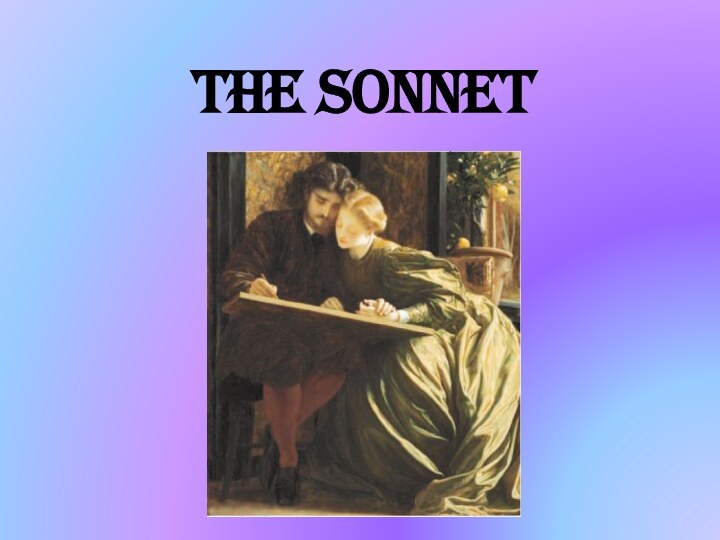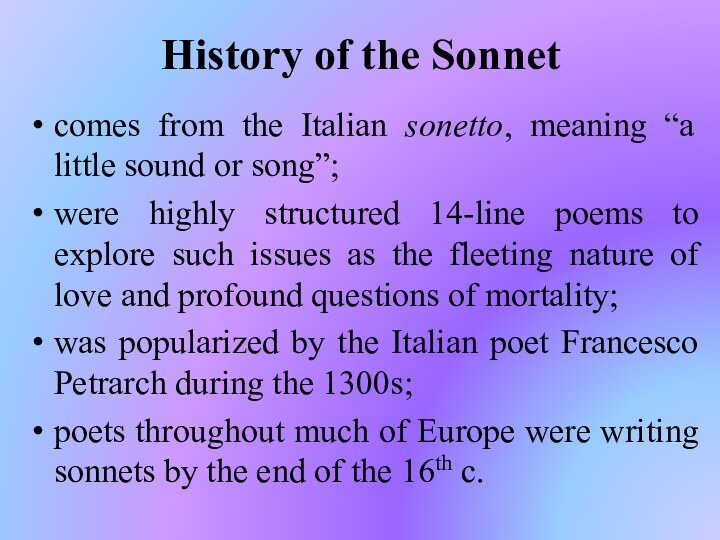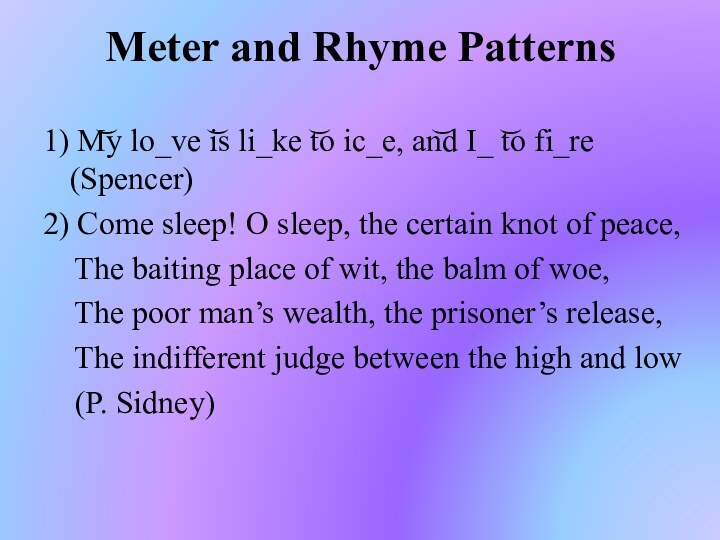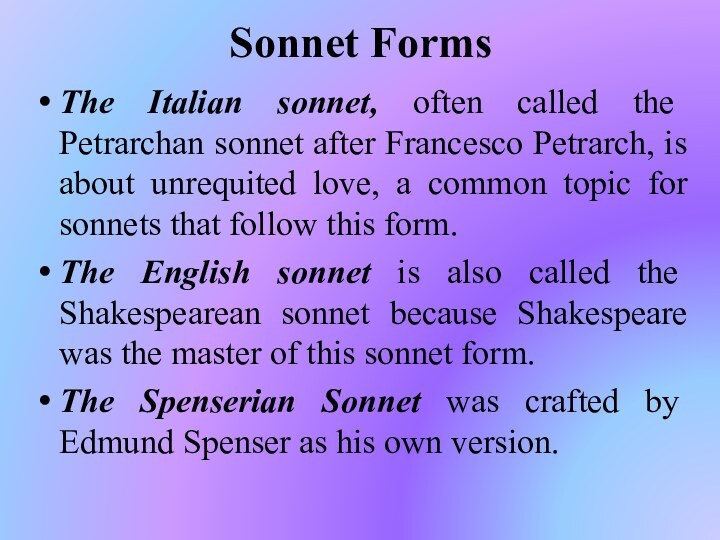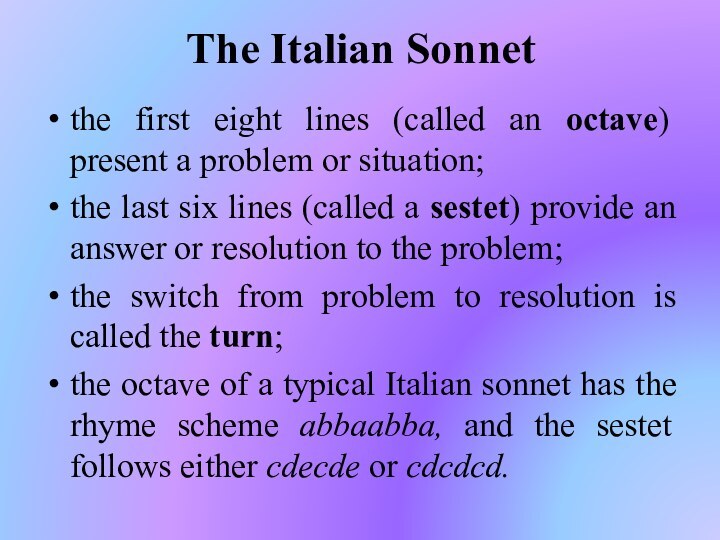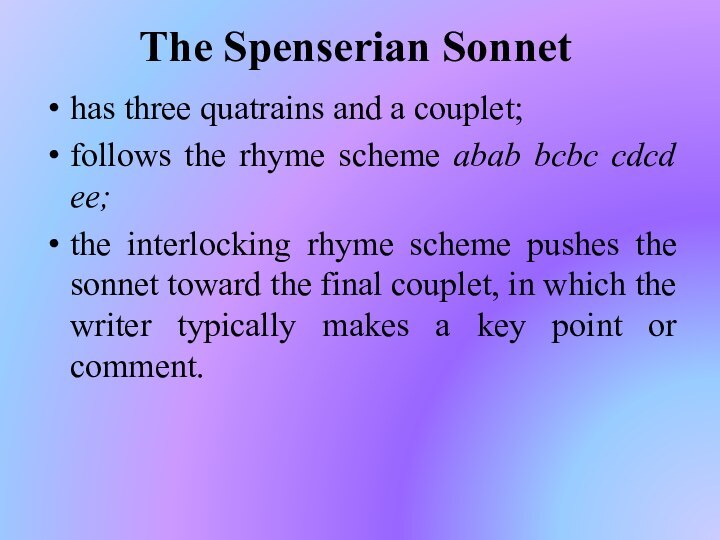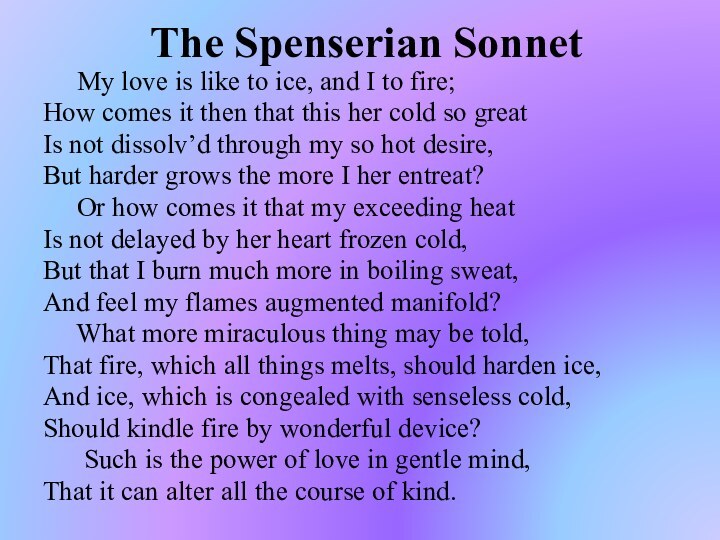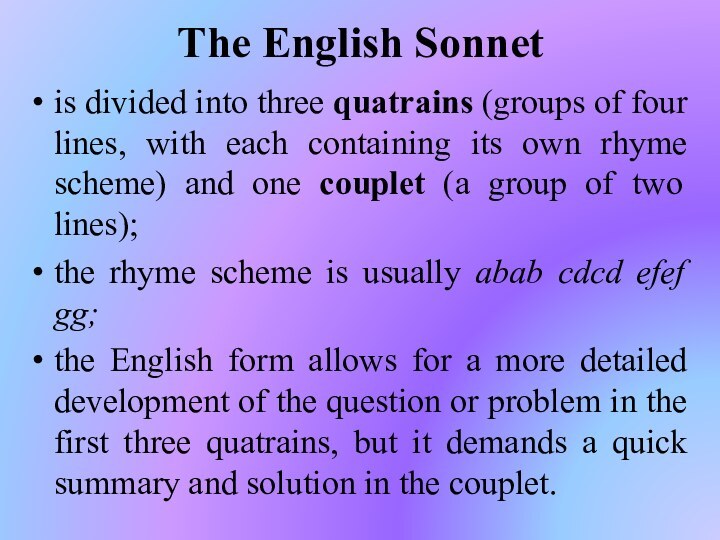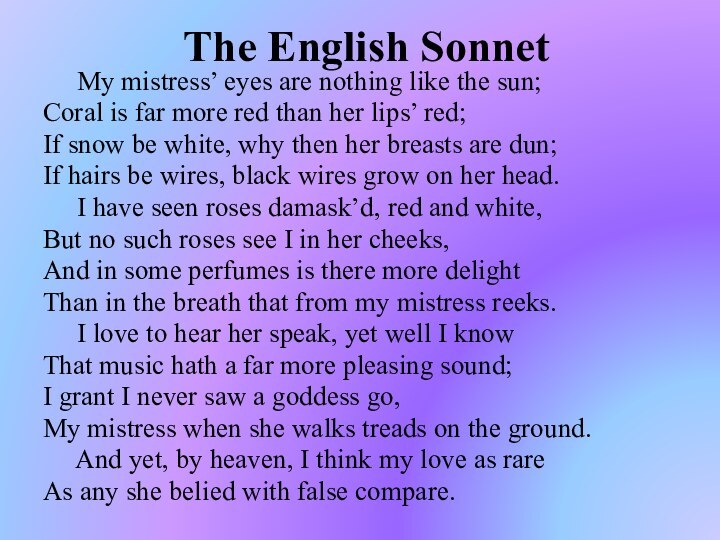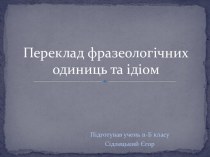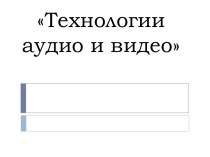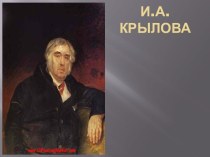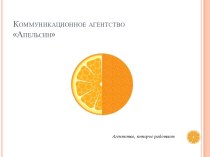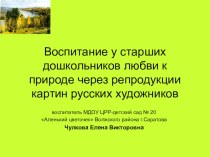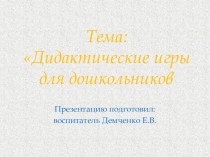Слайд 2
History of the Sonnet
comes from the Italian sonetto,
meaning “a little sound or song”;
were highly structured 14-line
poems to explore such issues as the fleeting nature of love and profound questions of mortality;
was popularized by the Italian poet Francesco Petrarch during the 1300s;
poets throughout much of Europe were writing sonnets by the end of the 16th c.
Слайд 3
Meter and Rhyme Patterns
have fourteen lines, each of
which is written in iambic pentameter;
each line has five
metric units, or feet, and each foot consists of an unstressed syllable followed by a stressed syllable;
have set rhyme schemes, determined by the final sounds in the lines.
Слайд 4
Meter and Rhyme Patterns
1) M͝y lo_ve i͝s li_ke
t͝o ic_e, an͝d I_ t͝o fi_re (Spencer)
2) Come sleep!
O sleep, the certain knot of peace,
The baiting place of wit, the balm of woe,
The poor man’s wealth, the prisoner’s release,
The indifferent judge between the high and low
(P. Sidney)
Слайд 5
Sonnet Forms
The Italian sonnet, often called the Petrarchan
sonnet after Francesco Petrarch, is about unrequited love, a
common topic for sonnets that follow this form.
The English sonnet is also called the Shakespearean sonnet because Shakespeare was the master of this sonnet form.
The Spenserian Sonnet was crafted by Edmund Spenser as his own version.
Слайд 6
The Italian Sonnet
the first eight lines (called an
octave) present a problem or situation;
the last six lines
(called a sestet) provide an answer or resolution to the problem;
the switch from problem to resolution is called the turn;
the octave of a typical Italian sonnet has the rhyme scheme abbaabba, and the sestet follows either cdecde or cdcdcd.
Слайд 7
The Italian Sonnet
If my life finds strength enough
to fight
the grievous battle of each passing day,
that I
may meet your gaze, years from today,
lady, when your eyes have lost their light,
and when your golden curls have turned to white,
and vanished are your wreaths and green array,
and when your youthful hue has fled away,
whose beauty makes me tremble in its sight,
perhaps then Love will overcome my fears
enough that I may let my secret rise
and tell you what I’ve suffered all these years;
and if no flame be kindled in your eyes,
at least I may be granted for my tears
the comfort of a few belated sighs.
Слайд 8
The Spenserian Sonnet
has three quatrains and a couplet;
follows
the rhyme scheme abab bcbc cdcd ee;
the interlocking rhyme
scheme pushes the sonnet toward the final couplet, in which the writer typically makes a key point or comment.
Слайд 9
The Spenserian Sonnet
My love is
like to ice, and I to fire;
How comes it
then that this her cold so great
Is not dissolv’d through my so hot desire,
But harder grows the more I her entreat?
Or how comes it that my exceeding heat
Is not delayed by her heart frozen cold,
But that I burn much more in boiling sweat,
And feel my flames augmented manifold?
What more miraculous thing may be told,
That fire, which all things melts, should harden ice,
And ice, which is congealed with senseless cold,
Should kindle fire by wonderful device?
Such is the power of love in gentle mind,
That it can alter all the course of kind.
Слайд 10
The English Sonnet
is divided into three quatrains (groups
of four lines, with each containing its own rhyme
scheme) and one couplet (a group of two lines);
the rhyme scheme is usually abab cdcd efef gg;
the English form allows for a more detailed development of the question or problem in the first three quatrains, but it demands a quick summary and solution in the couplet.
